
How it all began

First and foremost, the Gaulish Village is the story of a group of friends on an adventure led by Jean-Luc Blanchard, the founder and director.
The Gaulish Village began in Volvestre with Jean-Luc Blanchard. After a decade mushing in the Pyrenees, the history buff was free to scour the countryside for traces of ancient or historical remains to help update the archaeological map of the region for the Regional Archaeology Department. He had a lightbulb moment after a thousand items were uncovered in a major discovery in the Garonne ranging from the Bronze Age to the Middle Ages (coins, weapons, jewellery). Why not build a real Gaulish village!
The Gaulish Village over the years...
-

1993
Documentary research began
-
1996
Début des travaux : PWork began: rye planting for the roofs and the first harvest and tree felling.
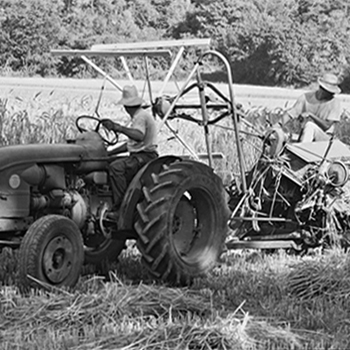
-

1997
The Archéosite Gaulois Association was founded. 2nd harvest of rye threshed, sorted and stored
-
1997-1998
The first 3 buildings were built. The first roofs were completed.
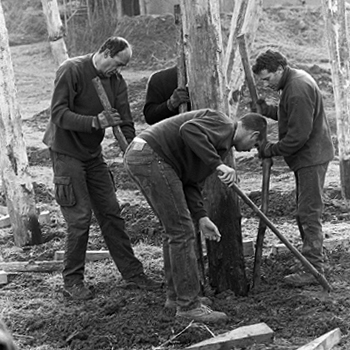
-
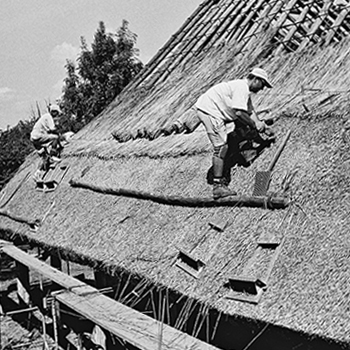
1999
3 apprentices were hired to build 5 houses.
-
2000
Building continued. The first school groups visited on guided tours. Hazel trees were felled to make gates for all the paths.
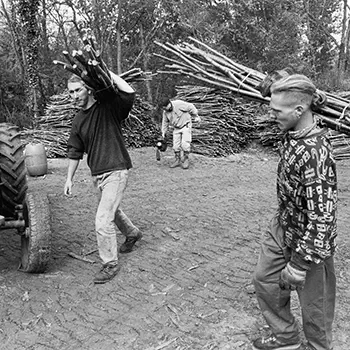
-
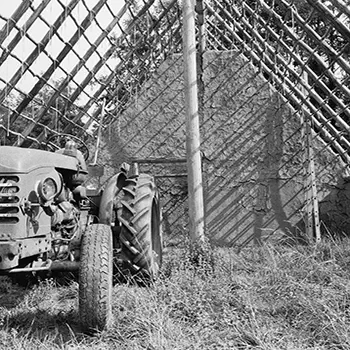
2001
Building continued. The access road and car park were built. The site opened to the public for the first time during the Heritage Days (2750 visitors on 2 days).
-
2002
Construction continued. The first workshops for school groups took place. The general public attended for an event during the Heritage Days: 3000 visitors. The wood required for future building work was collected.

-

2003
The sanctuary was built. The reception building was built to HQE standards. It now houses the ticket desk, shop and restaurant (450m²). It was only open to the public over summer (17,000 visitors in 2 months) The 1st section of the village rampart was built
-
2004
The chattel house was built (bronzier's workshop). The village rampart was completed. The site hosted the 1st Rencontres Archéologiques on the theme of "Agriculture in its environment at the end of the Iron Age." A report on the conference was published. The council approved the reconstruction. The shop opened.
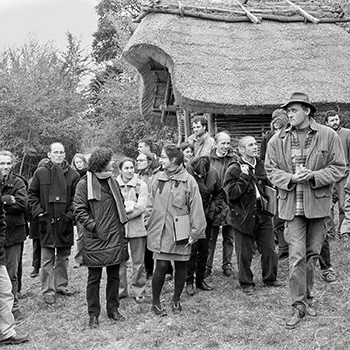
-
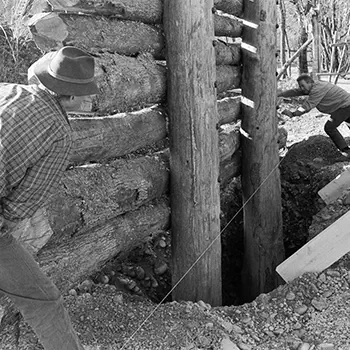
2005
The fortified village gate was built. Interior and exterior fencing was completed. The restaurant kitchen was built. The site opened between Easter and November 11th.
-
2006
Exposition Vin Vin de Folie Rites and Consumption among the Gauls exhibition. The exhibition catalogue was published. The 1st "Les Passions" Baroque music concert withthe Orchestre de Montauban. The village was completed with its fortifications, gate and reception building.
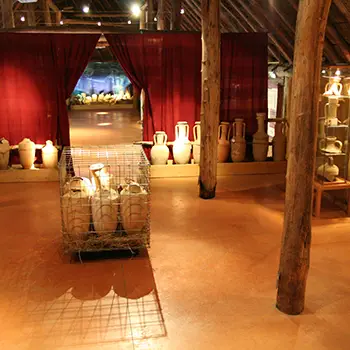
-
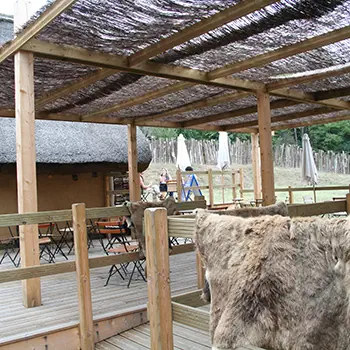
2007
2e con2nd "Les Passions" Baroque music concert with the Orchestre de Montauban. "Le Snack" restaurant opened for the first time in high season (July-August).
-
2008
The site hosted the 2nd Rencontres Archéologiques on the theme of "Earth and wood - Earthen architecture in recent protohistory." It resulted in a 28-minute documentary. The school provision was expanded: treasure hunts, activities suitable for nursery/reception
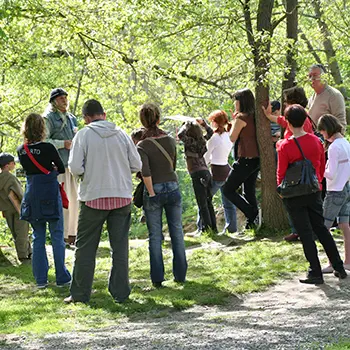
-

2009
The site hosted the 3rd Rencontres Archéologiques on the theme of "Typological and technical evolution of millstones in France from the Neolithic Age to 1000 AD" October 2nd-4th 2009. A report on the conference was published. Martin Malvy recognised the Gaulish Village as a regional cultural hub.
-
2010
The Archaeosite was expanded beyond the ramparts to showcase agriculture in Gaulish times A complete botanical trail was built to present plants and their uses in the Gallic period (food, medicinal, textile, dyeing) 300m of fencing was built to demarcate the agricultural area.
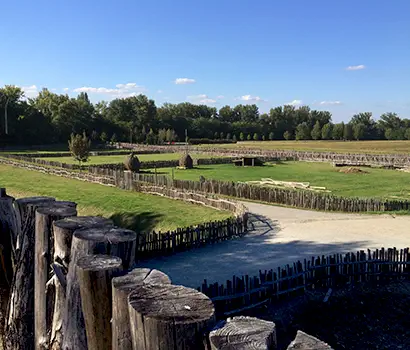
-
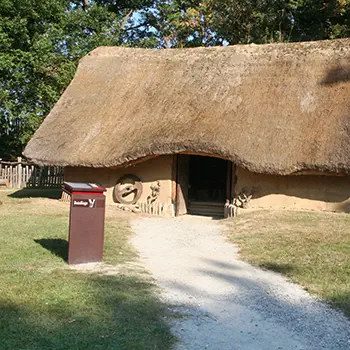
2011
Initial repairs to the village roofs. Jean-Luc Blanchard won the Bronze Medal for Tourism. The Chantier Gaulois documentary was filmed. The site's exhibition display was completely redesigned with content available in English and Dutch.
-
2012
Jean-Jacques Beineix used the site to film scenes for his documentary "Les Gaulois au-delà du mythe". Produced by ARTE France, Cargo Films, Inrap, CNRS Image. A log building and rebate assembly for animals in the agricultural area.
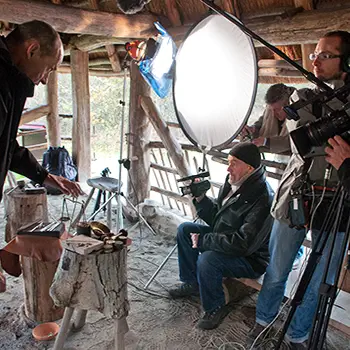
-

2013
4th Rencontres Archéologiques on the theme of "The Gauls are finally in the Plains". The Gallic Village was chosen to launch the 2013 National Archaeology Days. The Chantier Gaulois documentary was screened at the Toulouse Airchéo Archaeological Film Festival.
-
2014
The Chantier Gaulois documentary was shortlisted for the 2014 Amiens Archaeological Film Festival. Annual events launched for the spring half term (treasure hunt) and autumn half term (The 16 Days of Samonios).

-

2015
Online tickets went live. The site hosted the 7th Arkéo Fusions: experiments from ore to metal. Experiment: making a coracle.
-
2016
20th anniversary: A book about the project was published: "Le Village Gaulois - Toute une Histoire" Chantier Gaulois photography exhibition by Jean-Claude Vollmar exploring how the village was built. The very first "They attack the Gallic Village" event was staged. A new picnic area "in the woods" with composting toilets was built.
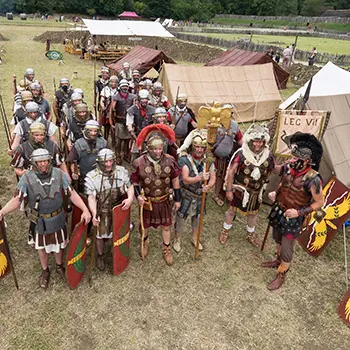
-
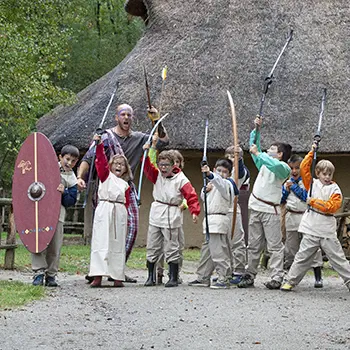
2017
The second "They attack the Gallic Village" event. The site began hosting birthday parties. Roof repairs.
-
2018
The Gallic Village opened to the general public from February to November with a new guided tour mobile app: 2 routes for a complete guided tour of the site.
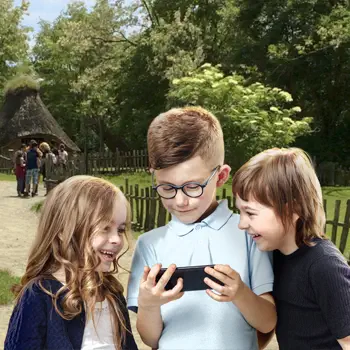
-
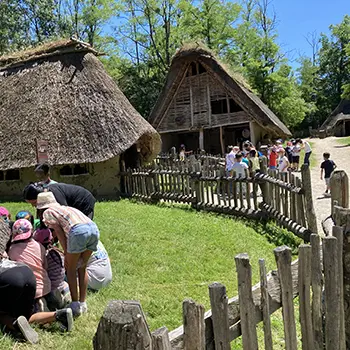
2019
New educational games for schools were designed. The fourth "They attack the Gallic Village" event. Jean-Luc Blanchard won the Silver Medal for Tourism.
-
2020
A new mystery trail: familes have to save the Gaulish Village from a terrible curse. 3 small wooden huts were built to host children's workshops. The roof of the reception building was renovated.

-

2021
3 more small wooden huts were built to host children's workshops. The Gaul crafts box was launched.
-
2022
The Gaul crafts box expanded. The Secret d'Histoire programme about the life of Vercingetorix was filmed here.

-
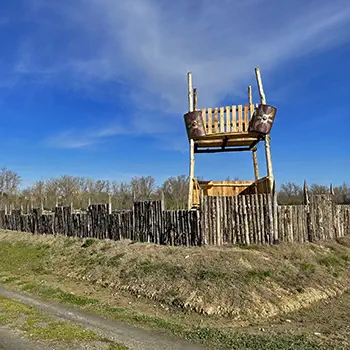
2023
A Roman camp was built: stake fencing on an embankment. The fifth "They attack the Gaulish Village" event.

 Tickets
Tickets